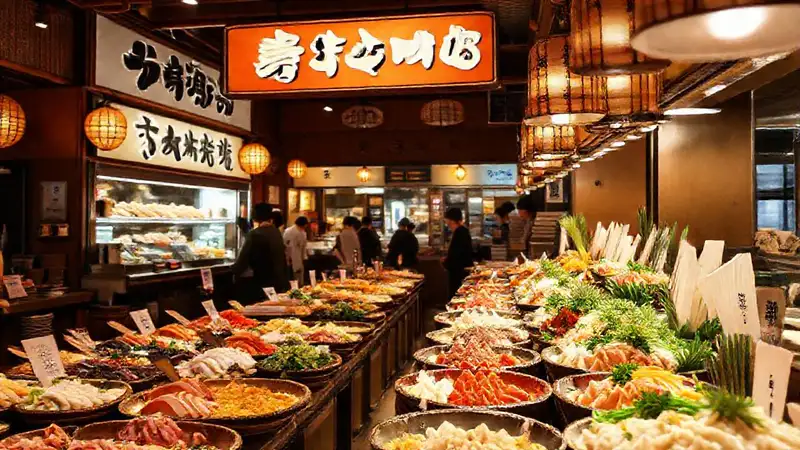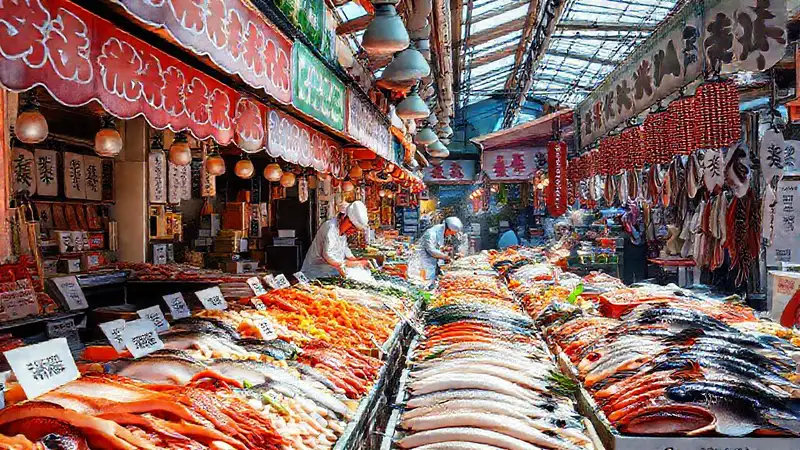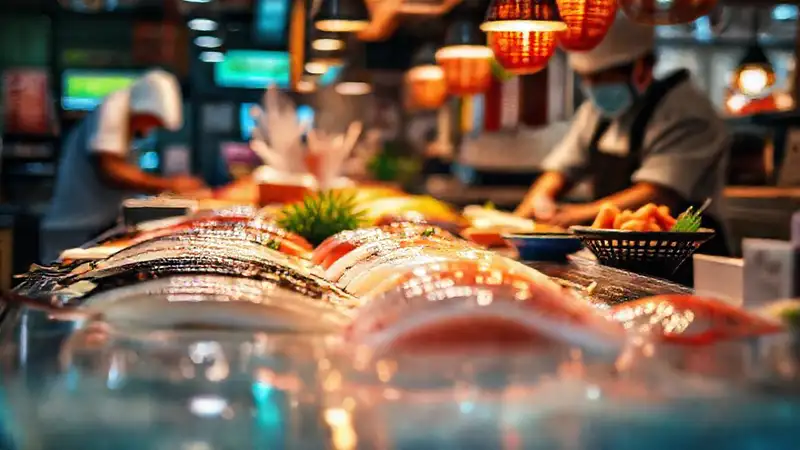Sushi, a beloved Japanese culinary art, extends far beyond simple raw fish and rice. It’s a deeply rooted tradition, with vastly different approaches to preparation and presentation depending on the region. While the core principle – utilizing incredibly high-quality ingredients – remains constant, the specific techniques and philosophies vary significantly. Each region boasts its own unique style, influenced by local ingredients, fishing practices, and even cultural preferences. This article will explore three prominent regional sushi styles: Hokkaido, Kansai, and Tokyo, highlighting the distinctive characteristics that define each.
Understanding these nuances is crucial for appreciating the richness and complexity of sushi beyond the familiar images of vibrant, meticulously crafted pieces. From the austere elegance of Hokkaido's seafood-focused creations to the bolder, more assertive flavors of Kansai sushi, and the refined precision of Tokyo, each style offers a unique pathway into the heart of this cherished Japanese dish. Let's dive into what sets them apart.
Hokkaido Sushi: The King of Seafood
Foraging for the Finest
Hokkaido sushi is renowned for its unparalleled abundance of fresh seafood, largely due to the region’s extensive coastline and cold waters. Unlike many other sushi regions reliant on long-distance transport, Hokkaido utilizes incredibly local catches - crabs, scallops, sea urchin, and various types of fish are prominent. Traditionally, chefs relied heavily on seasonal foraging expeditions, often venturing out on boats at dawn to procure the freshest possible ingredients. This direct access to the ocean’s bounty dictates the style, prioritizing the unadulterated flavour of the fish itself.
The preparation style reflects this philosophy: sushi is often served with minimal fuss, allowing the seafood’s natural taste to shine. The rice (shari) is typically steamed with a touch of kombu (kelp) to impart a subtle, sweet flavour, complementing rather than overpowering the fish. Expect to see larger pieces of fish, often whole or substantial portions, served simply with a dab of wasabi and a sprinkle of shiso leaf. Presentation is straightforward and emphasizes the raw, natural beauty of the ingredients.
The Role of the Sea Urchin
Sea urchin (uni) is a cornerstone of Hokkaido sushi. The region’s prolific uni production makes it an integral part of almost every plate. Unlike some regions where uni is a secondary element, in Hokkaido, it's a primary star. Chefs utilize a range of uni – from the rich, creamy “hon-tuna uni” (bright orange uni) to the darker, more intensely flavoured “akari uni” – to create a complex symphony of flavours and textures. It’s typically served simply, often just with a brush of soy sauce, allowing the inherent sweetness and umami to be fully appreciated.
Kansai Sushi: Bold Flavours and Creative Techniques

A Sweet and Savory Balance
Kansai sushi, primarily associated with Osaka and Kyoto, deviates significantly from the minimalist approach of Hokkaido. It’s characterized by a stronger emphasis on sweetness and a willingness to experiment with flavour combinations. The rice, or shari, is frequently seasoned with a touch of sweetened rice vinegar, creating a noticeably sweeter profile than in other regions. This sweetness is often balanced with a generous amount of wasabi.
The use of toppings is also more elaborate. Kansai sushi frequently incorporates pickled vegetables, ginger, and a wider variety of sauces and condiments. Chefs are known for their creativity in combining ingredients, for example, using a slightly sweet and tangy sauce to complement the fish. You’ll find more elaborate rolls and combinations, reflecting a more adventurous approach to sushi design.
Techniques of Preservation
Historically, the hot and humid climate of Kansai necessitated techniques for preserving seafood longer. Pickling, salting, and drying were common practices, and these methods have influenced the region’s sushi style. The preservation itself adds a distinct flavour dimension that is then interwoven with the fresh ingredients. Many Kansai chefs continue to incorporate these preservation techniques into their modern sushi creations, creating unique and layered flavour profiles.
Tokyo Sushi: Precision and Refinement
The Art of Edomae
Tokyo sushi, known as Edomae sushi, is renowned for its meticulous preparation and technical mastery. Originating in Edo (now Tokyo), it developed alongside the city's thriving fishing industry, emphasizing the importance of carefully selecting and preparing seafood. The Edomae style is characterized by a unique process of “nixtoc” – marinating the fish in vinegar and salt – to further enhance its flavour and texture.
This process is deeply ingrained in the tradition, alongside the use of sharioki - specialized wooden boxes used for preparing rice – ensuring consistent temperature and texture. Chefs meticulously control every aspect of the process, from the temperature of the rice to the angle at which the fish is sliced. The presentation is highly stylized, emphasizing clean lines, perfect shapes, and a harmonious arrangement of ingredients.
Precise Cuts and Display
Tokyo sushi utilizes incredibly precise cutting techniques to showcase the beauty and quality of the fish. The fish is often sliced with a small, sharp blade, creating thin, elegant ribbons. The placement on the plate is also carefully considered, with an emphasis on visual balance and harmony. The goal is not simply to create a delicious piece of sushi, but to craft a miniature work of art—a testament to the chef’s skill and dedication.
Conclusion
Exploring the regional variations in sushi reveals a fascinating testament to cultural diversity and culinary innovation. Each style – Hokkaido’s focus on simplicity and abundant seafood, Kansai’s bold flavour combinations, and Tokyo’s refined precision – offers a distinct interpretation of this beloved Japanese dish. Ultimately, they all share a common foundation: the commitment to using exceptional ingredients and honoring the traditions of sushi-making.
The study of these regional styles not only broadens one's appreciation for the complexity of sushi but also highlights the importance of local ingredients and culinary heritage in shaping the dining experience. From the rugged coastlines of Hokkaido to the bustling markets of Kansai and the refined workshops of Tokyo, the story of sushi is a vibrant reflection of Japan’s rich and diverse landscape.
 How does the seasonality affect Kansai sushi
How does the seasonality affect Kansai sushi What are the traditional seasonings in Kansai sushi
What are the traditional seasonings in Kansai sushi How does Hokkaido's mountainous terrain impact seafood
How does Hokkaido's mountainous terrain impact seafood How does Hokkaido’s connection to agriculture help
How does Hokkaido’s connection to agriculture help How does Hokkaido’s promotion of local products help
How does Hokkaido’s promotion of local products help How does Hokkaido’s seafood selection shape sushi
How does Hokkaido’s seafood selection shape sushi What’s the significance of the bamboo mat usage
What’s the significance of the bamboo mat usage
Deja una respuesta